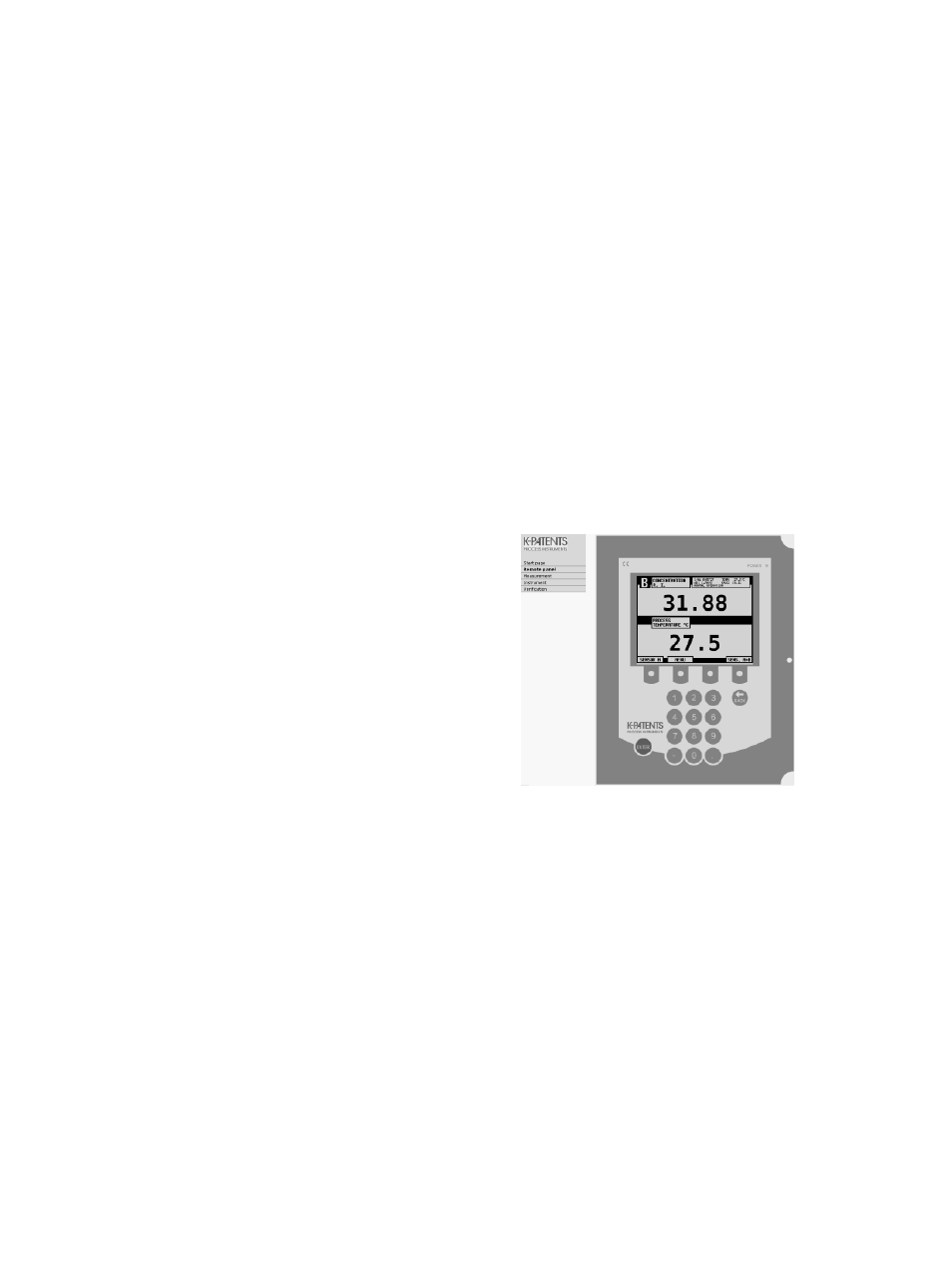5 collecting data via ethernet – K-Patents PR-23 User Manual
Page 179

12 Ethernet connection specification
171
Opening the instrument homepage:
1. Establish a working Ethernet connection (see above) to the DTR.
2. Start your preferred web browser (for example Internet Explorer, Mozilla Fire-
fox, Safari, Opera or Chrome).
3. The address (URL) of the instrument homepage is the DTR’s IP address, for
a factory set DTR it is http://192.168.23.254/ (the figure 12.10 above uses a
different address, not the default). Give the address to the browser just like
you’d enter any other address (for example http://www.kpatents.com/)
4. Wait until the homepage is loaded, this may take a few seconds.
If the page looks strange in the first try, refresh/reload the page and it should
settle to look approximately like in Figure 12.10; the exact look of the page de-
pends on your browser and screen settings so slight variation can be expected.
5. Use the links in the link bar on the left side of the page to find more extensive
information on the instrument.
12.4.1 Remote panel
Figure 12.11
DTR remote panel
The instrument remote panel is a
fully functional virtual DTR where
keys on the keyboard are clicked
with a mouse.
The DTR doesn’t
make any difference between com-
mands coming from the actual key-
board and from a remote panel. All
commands are executed in the order
the DTR gets them, independent of
where they come from.
Note:
The DTR display picture on
the remote panel sometimes has a
slight lag (of few seconds) before it
refreshes.
This depends on many
factors like the computer and net-
work used. If the DTR seems to ’skip’
displays, it may be that it is executing
mouse-click keyboard commands faster than your browser updates the picture.
12.4.2 Sensor verification certificate
A sensor verification certificate can be viewed and printed by following the Veri-
fication link on the link bar. For more information on instrument verification, see
Chapter 13.
12.5 Collecting data via Ethernet
The main purpose of the Ethernet connection is to collect measurement data
from the instrument. For this data acquisition, you’ll need to have suitable soft-
